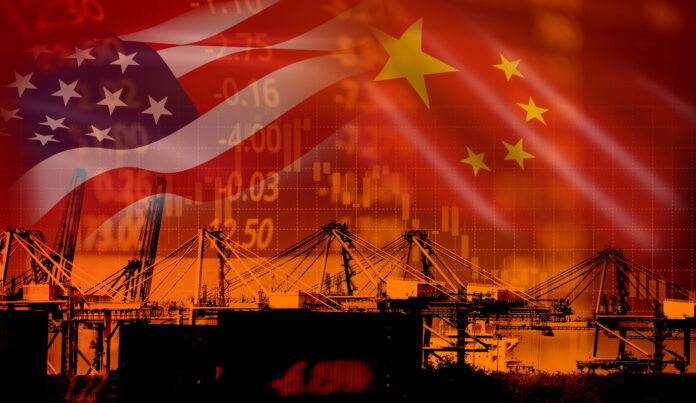
Tiempo de lectura aprox: 2 minutos, 45 segundos
The rise in Chinese imports to Mexico is not a weakness but a natural part of strengthening its industrial base by integrating machinery and inputs from the world’s most advanced supply chain. Nearshoring is about mitigating risks, not just cutting costs, and the substitution of imports will be a gradual process. This represents a historic opportunity to integrate Mexican businesses and SMEs into global supply chains, replicating Asia’s success in driving economic and social development.
The Myth of the “Backdoor”
Some international media outlets and ill-informed analysts suggest that Mexico is becoming a “backdoor” for Chinese goods to enter the U.S. However, this narrative, besides being incorrect, ignores a critical detail: producing more goods locally requires importing more components from abroad. It’s not smuggling; it’s manufacturing.
According to the Mexican government, cars made in Mexico contain just 7% Chinese components, compared to 9% in the U.S. The numbers don’t lie: we’re producing more with less dependence on Asia than some might want you to believe.
Why Import Substitution Doesn’t Happen Overnight
Replacing China isn’t a switch you can flip overnight. It’s a long, meticulous, and strategic process. Mexico needs time and planning to build capacities, develop local suppliers, and invest in infrastructure. But the reward is immense.
Sectors like automotive, electromobility, medical devices, electronics, and chips are already leading this shift. Companies like Intel have announced they will replace 12% of their imports of heat sinks and substrates with local production. General Motors is working on specific plans to relocate part of its supply chain to Mexico. Meanwhile, MABE aims to bring over 50% of its imports back into the Mexican market. This isn’t just political rhetoric; it’s an industrial transformation in action.
An Opportunity for Mexico’s Giants and SMEs
Nearshoring is no longer about cutting costs like in the golden days of globalization. It’s about mitigating risks and building robust industrial ecosystems. For Mexico’s large corporations and SMEs, this is a historic moment: integrating into global supply chains could be the leap that transforms the nation’s economy.
We’ve seen it in Asia. Countries like South Korea and China achieved significant improvements in incomes and living standards by joining these supply chains. Mexico is uniquely positioned to replicate this success. But this can only happen if collaboration with foreign multinationals and local conglomerates becomes a national priority.
Disinformation as a Silent Enemy
The narrative that Mexico is merely a “bridge” for Chinese goods isn’t just an error; it’s a political weapon. Some media outlets and analysts act as useful tools for interests looking to undermine Mexico’s role in the region. But the data tells a different story: Mexico is more than just a link; it’s a key player in the reconfiguration of global supply chains.
This confusion only benefits those who want to weaken Mexico’s position under the USMCA. That’s why it’s crucial to communicate clearly, forcefully, and with real data. Every step toward import substitution is a step toward a stronger and more resilient national industry.
What’s Next?
Nearshoring is the tool. Import substitution is the plan. But Mexico’s true transformation depends on a strategic vision that combines foreign investment, the development of local suppliers, and a focus on key industries.
The challenge of Chinese imports is not just a Mexican issue—it’s a North American challenge tied to the global manufacturing companies that operate within the bloc. Resolving this will take time, coordination, and investment to build a robust regional supply chain that reduces reliance on Asia while fostering regional integration. At the same time, a critical aspect that must be strengthened is preventing regulatory arbitrage under the USMCA, ensuring that rules of origin are not misused. This has already been an issue in identified cases, and tightening enforcement will be essential to maintain the integrity of North America’s trade framework.
Chinese supply chains are not an obstacle; they reflect the current reality of global manufacturing. In the short term, they provide necessary inputs to strengthen our industry and mitigate risks. However, the ultimate goal is to reduce this reliance by building a resilient North American supply chain that positions Mexico as a leader in advanced manufacturing.
Moreover, North America must leverage this transition to build a shared vision for industrial growth. Mexico’s ability to lead this shift is crucial for the region’s economic security, but it will require intentional collaboration with the U.S. and Canada. A collective approach will help ensure that the North American bloc becomes a global manufacturing powerhouse that is less vulnerable to external disruptions.
To transition away from dependency on China, we must act with intelligence, strategy, and vision—prioritizing regional integration and long-term competitiveness within the North American bloc. By doing so, Mexico will not only strengthen its own position but also secure a leading role in driving the economic future of the region.
Jorge Flores Kelly is economist and speaker. He is a born leader and visionary with a multifaceted and impressive career based on an international education and extensive professional experience in both the public and private sectors.
La columna de Jorge Flores Kelly|| México y la industria automotriz en el centro del Nearshoring









